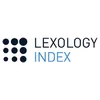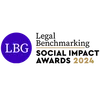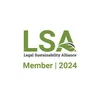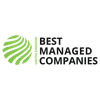Summary #
- The EU has now agreed the world’s first dedicated AI regulation, and it sets out some practices which will be considered prohibitive and high risk;
- This is likely to feed into patent law, at least indirectly, as patent offices will need to apply statute consistent with the regulations.
- Patent owners and innovators should keep the regulation in mind and for new applications, ensure there is basis in the specifications for taking the claims out of prohibited scope if necessary;
- For pending applications and granted rights, it is advisable to identify those which could be related to prohibited technology and be mindful of any changes in the law which could be introduced in the next 2-3 years that could have an impact on the substantive patentability of that technology.
AI in our lives #
Artificial Intelligence (AI) and its applications are becoming more and more pervasive in our modern society. Multiple aspects of our life are already being influenced by AI driven systems. It is not often one visits a friend’s house these days without seeing an Amazon Alexa® or a Google Home® device which deploy AI to assist you in your daily tasks. Additionally, many banks have been applying AI in fraud prevention for a long time where classification techniques are applied to the detection of anomalous transactions.
Cautious words #
That said, despite the potential of AI to assist us in improving our lives, concerns are being raised about how far it can invade our lives and the ethical questions around the application of AI driven systems. This has led to the development of the European Union (EU) AI Act. The first draft of the regulation was provided in April 2021 by the European Commission and has recently been updated in an independent draft by the European Parliament in June 2023. It has now been agreed by the European Parliament and Council and is now subject to formal approval by the European Parliament and it will be effective two years after it enters into force.
Implications for Patents #
As the EU AI Act is a regulation, when it comes into effect it will be automatically in force in all EU member states and that is without any transposition into the legal framework of those countries. This is likely to mean that it will be used to interpret the law in those countries and patent law will be no exception. It is expected to be agreed by the end of 2023 and will come into law in 2025.
The headline of this regulation, in its current form, is that AI-driven systems are to be classified by risk and some AI-driven systems are deemed by the regulations to create an unacceptable level of risk and are prohibited by the regulation. Other systems are deemed high risk, which will be permitted within certain regulatory requirements.
Other AI systems are going to be subject to strict transparency requirements, especially where those systems are configured for interaction with individuals or generate content.
With regard to patent law, it is expected that the EU AI Act will be used to exclude some technologies from patentability in EU member states in a similar way to how the Biotech Directive is used to exclude certain biotechnology-based technologies. That is to say, it is anticipated that the EU AI Act will be used to exclude from patentability those technologies which underpin the practices prohibited by the EU AI Act, which are (in summary):
- Systems which deploy subliminal techniques to distort a person’s behaviour in a manner which causes a person any harm;
- Systems which exploit vulnerabilities of a specific group of persons in order to distort behaviour in a manner which causes a person harm;
- Systems which seek to deploy social scoring to classify trustworthiness of persons based on their behaviour or personal characteristics, particularly if it leads to detrimental or unfavourable treatment;
- The use of real time biometric identification in public spaces, with certain exceptions.
How will the European Patent Office (EPO) respond? #
The EPO is not an EU member state and is therefore, not strictly speaking, bound by EU regulations. However, much like it did when the Biotech Directive came into force, it is expected that the EPO will also apply an interpretation of the EU AI Act to exclude certain technologies from patentability and it would be surprising if they did not match up with the prohibited practices which are listed above.
How about the UK? #
The UK is one of the most respected patent jurisdictions which is also a member of the European Patent Convention but it is, famously, no longer an EU Member State. This means that, like with the EPO, it is not bound by EU regulation.
Additionally, the UK is yet to introduce any legal instrument which goes to the same lengths as the EU AI Act in that the white paper titled “Establishing a pro-innovation approach to regulating AI” does not prohibit specific practices. It does, however, encourage regulators to focus on the risk posed by AI systems. This could be read as encouragement to bodies like the UK Intellectual Property Office (UKIPO) and law makers in the UK to perhaps exclude certain technologies from patent protection if they are deemed to pose an unacceptable level of risk.
Next Steps for Patent Owners and Innovators #
It should be noted that any regulation is not likely to come into force until 2025 at the earliest and, even then, patent law will take its own time to respond.
With respect to pending applications and patents which are already granted, there is not much to do aside from wait to see how it is to be applied through patent law. If you believe your technology sails close to prohibited territory or even high-risk territory, then a prudent step would be to identify that technology and any corresponding patent rights early to provide time to act if there is any need to respond.
With respect to patent filing strategies, it is likely that any changes to patent law will be introduced during the pendency of new applications, and this could impact their prosecution. For this reason, ensure patent applications for relevant technologies are filed with specifications which have enough basis to permit amendment which could take the claims out of prohibited or high-risk territory if necessary.
It is also advisable to watch your competitor’s activity. If changes are introduced there is likely to be uncertainty as to how they are applied for some time, and the ambiguity around the application may be a good time to file oppositions or third-party observations against third party rights which play on this uncertainty.
If you want to discuss any of these matters, do not hesitate to contact us, your usual Murgitroyd advisor or Dr Terence Broderick.





















